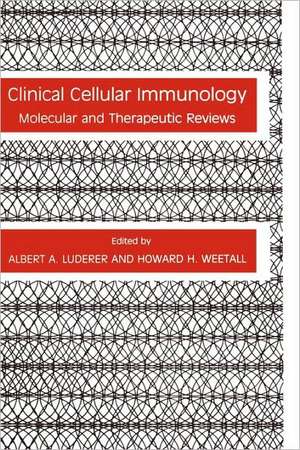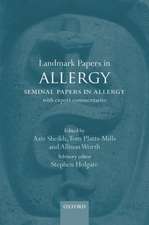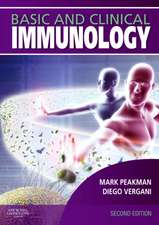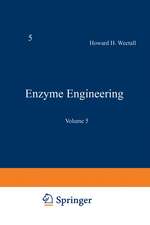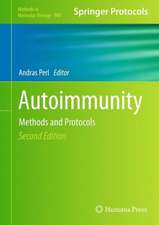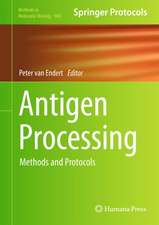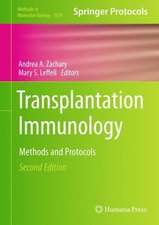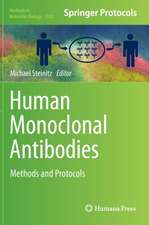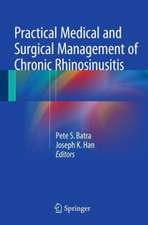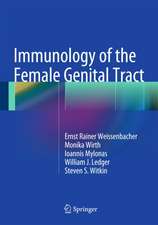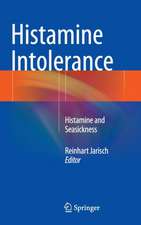Clinical Cellular Immunology: Molecular and Therapeutic Reviews: Contemporary Immunology
Autor Albert A. Luderer, Howard H. Weetallen Limba Engleză Hardback – 23 iul 1982
| Toate formatele și edițiile | Preț | Express |
|---|---|---|
| Paperback (1) | 722.33 lei 6-8 săpt. | |
| Humana Press Inc. – 12 oct 2011 | 722.33 lei 6-8 săpt. | |
| Hardback (1) | 729.42 lei 6-8 săpt. | |
| Humana Press Inc. – 23 iul 1982 | 729.42 lei 6-8 săpt. |
Preț: 729.42 lei
Preț vechi: 767.81 lei
-5% Nou
Puncte Express: 1094
Preț estimativ în valută:
139.59€ • 151.58$ • 117.26£
139.59€ • 151.58$ • 117.26£
Carte tipărită la comandă
Livrare economică 22 aprilie-06 mai
Preluare comenzi: 021 569.72.76
Specificații
ISBN-13: 9780896030114
ISBN-10: 0896030113
Pagini: 392
Ilustrații: XX, 392 p.
Dimensiuni: 155 x 235 x 24 mm
Greutate: 0.76 kg
Ediția:1982
Editura: Humana Press Inc.
Colecția Humana
Seria Contemporary Immunology
Locul publicării:Totowa, NJ, United States
ISBN-10: 0896030113
Pagini: 392
Ilustrații: XX, 392 p.
Dimensiuni: 155 x 235 x 24 mm
Greutate: 0.76 kg
Ediția:1982
Editura: Humana Press Inc.
Colecția Humana
Seria Contemporary Immunology
Locul publicării:Totowa, NJ, United States
Public țintă
ResearchCuprins
1 The T Cell Antigen Receptor: Structural and Functional Considerations.- 1. Overview.- 2. Functional and Physical Analysis of T Cell Antigen-Specific Receptors.- 3. Serological and Biochemical Analysis of T Cell Antigen-Specific Receptors.- 4. Physiologic Constraints in the Recognition Function of the T Cell Antigen Receptor.- 5. Cytotoxic T Cell Ligand-Binding Sites are Critically Affected by Recognition Structures on Other Cells.- 6. Summary.- References.- 2 Regulation of the Immune Response.- 1. Introduction.- 2. Ir Genes in Guinea Pigs.- 3. The Ir-1 Gene.- 4. Genetic Control of Immune Responsiveness to Staphylococcal Nuclease.- 5. Ia Antigens.- 6. Complementing Ir Genes.- 7. Immunosuppressor Genes.- 8. Genetic Control of Cellular Immune Responses.- 9. Human Immune-Response Genes.- 10. An Hypothesis to Explain the Interrelationship Among Ir Genes, Ia Antigens, and MLR-Stimulating Determinants.- 11. Conclusions.- References.- 3 Immunosuppressive Agents: A Conceptual Overview of Their Action on Inductive and Regulatory Pathways.- 1. Introduction.- 2. Inductive and Regulatory Aspects of Immune Responses: Current Concepts.- 3. Classes and Subclasses of Lymphocytes and Their Functions.- 4. Antibody Responses to Thymus-Independent and Thymus-Dependent Antigens.- 5. Inductive and Regulatory Functions: Antigens, Cells, Cognitive and Regulating Molecules, and Networks.- 6. A Closer Look at Induction and Regulation of Cell-Mediated Immunity.- Acknowledgments.- References.- 4 Immunosuppressive Agents—Their Action on Inductive and Regulatory Pathways: The Differential Effects of Agents Used Clinically or Experimentally in the Treatment of Cancer.- 1. Variables that Determine the Effect of Cancer Therapeutic Agents on Antibody Production.- 2. Diversity of Effects ofImmunosuppressive Drugs on CMI.- 3. Alkylating Agents Exert Selective Action Against Cells in the Suppressor Pathway.- 4. A Closer Look at Agents That Are More Suppressive Before Immunization.- 5. The Many Faces and Interfaces of Cyclophosphamide Action.- Acknowledgments.- References.- 5 The Immunobiology of Human Non-Hodgkin’s Lymphomas.- 1. Introduction.- 2. Classification Schema.- 3. Functional Studies.- 4. The Ontogeny of Lymphocytes.- 5. Overview of Immunoregulation.- 6. Lymphocyte Identification.- 7. New Directions.- Acknowledgments.- References.- 6 Cell-Mediated Immunity in Autoimmune Disease.- 1. Introduction.- 2. Self-Recognition and Tolerance.- 3. Induction of Autoimmunity.- 4. Pathogenic Mechanisms in Autoimmune Disease.- 5. Cell-Mediated Immunity in Autoimmune Diseases of Animals.- 6. Cell-Mediated Immunity in Autoimmune Disease of Humans.- 7. Summary.- References.- 7 Cell-Mediated Immunity in Tumor Rejection.- 1. Immune Surveillance—A Theory Under Scrutiny.- 2. Tumor Antigens.- 3. Effector Mechanisms in Cell-Mediated Immunity.- 4. Effector Molecules.- 5. Depression of Immunity by Tumors: Suppressor Cells and Factors.- 6. Immunotherapy.- 7. Conclusions.- References.- 8 Transfer Factor and Other Factors in Leukocyte Dialyzates That Affect Cell-Mediated Immunity.- 1. Introduction.- 2. The Transfer Phenomenon.- 3. Clinical Use of Leukocyte Dialyzates or Transfer-Factor Preparations.- 4. Biochemical Characterization.- 5. Experimental Considerations.- 6. Implications for Immunotherapy.- References.- 9 Hybridization of Lymphocytes: Techniques and Applications.- 1. Introduction.- 2. B Cell Hybrids.- 3. T Cell Hybrids.- 4. Applications and Future Perspectives.- Notes Added in Proof.- Acknowledgment.- References.- 10 Immunologic Tests for Diagnosis andMonitoring of Defects in Cell-Mediated Immunity.- 1. Introduction.- 2. Anatomy of the Immune System.- 3. In Vivo Manifestations of Cell-Mediated Immunity.- 4. In Vitro Tests of Cell-Mediated Immunity.- 5. Clinical Immunodeficiencies.- 6. Conclusion.- Acknowledgments.- References.
